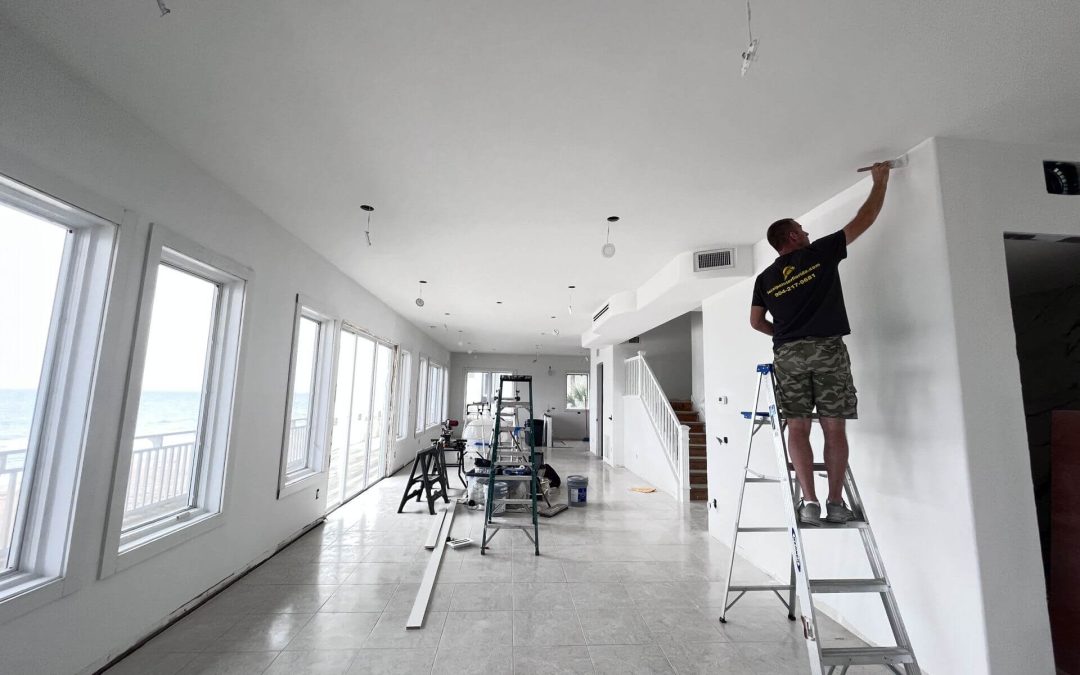Repainting interior walls can transform the look and feel of your home. Whether you’re refreshing a single room or repainting the entire house, achieving a professional finish requires careful preparation, the right materials, and proper techniques. In this guide, we’ll walk you through everything you need to know about repainting interior walls, from gathering materials and choosing the right paint to mastering painting techniques and understanding cost considerations. We’ll also cover tips for repainting doors and provide insights into whether you should tackle the job yourself or hire a professional.
Preparation before painting
Gathering materials and tools: Before you start repainting, make sure you have all the necessary materials and tools.
Here’s a list of essentials:
- Paint (primer and topcoat)
- Paintbrushes (angled and straight)
- Paint rollers and roller covers
- Painter’s tape
- Drop cloths or plastic sheeting
- Sandpaper (medium and fine grit)
- Spackling compound and putty knife
- Paint tray and liners
- Ladder or step stool
- Safety gear (gloves, goggles, and mask)
Cleaning and repairing walls
Start by cleaning the walls to remove any dust, dirt, or grease. Use a mild detergent solution and a sponge to wipe down the walls. Rinse with clean water and allow the walls to dry completely. Inspect the walls for any cracks, holes, or imperfections. Use spackling compound to fill in any holes or cracks, then sand the repaired areas until they are smooth and flush with the wall surface.
Protecting furniture and floors
To protect your furniture and floors from paint splatters and spills, move furniture to the center of the room and cover it with drop cloths or plastic sheeting. Use painter’s tape to mask off edges, trim, and any areas you don’t want to paint. Lay drop cloths on the floor to catch any drips or spills.
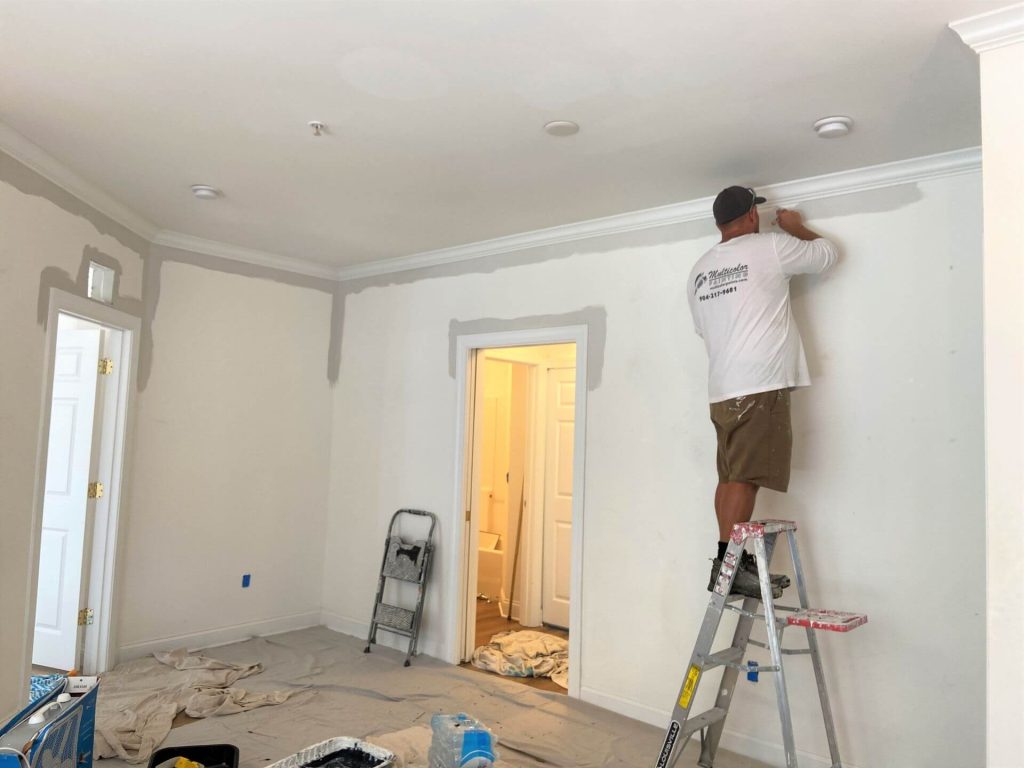
Inside house painting
Choosing the right paint
Types of paint: Choosing the right type of paint is crucial for achieving a professional finish. There are several types of paint to consider:
- Latex paint: Water-based and easy to clean up, latex paint is durable and ideal for most interior walls.
- Oil-based paint: Provides a smooth, hard finish and is great for high-traffic areas, but it takes longer to dry and requires mineral spirits for cleanup.
- Acrylic paint: Known for its excellent adhesion and flexibility, making it suitable for surfaces like wood and drywall.
Choosing colors
Selecting the right color can significantly impact the room’s ambiance. Consider the room’s purpose, natural light, and existing décor when choosing paint colors. Use color swatches and sample paints to test how different shades look in the room at various times of the day. -> White walls? Benefits and drawbacks
Estimating paint quantity
To avoid running out of paint mid-project or wasting money on excess paint, accurately estimate how much you’ll need. Measure the room’s dimensions (height and width of each wall) and use an online paint calculator or ask for assistance at your local paint store. Generally, one gallon of paint covers about 350 square feet.
Painting techniques
Cutting in involves painting the edges and corners of the walls where rollers can’t reach. Use an angled brush to paint along the edges of the ceiling, baseboards, and trim. Keep a steady hand and apply paint in smooth, even strokes to ensure clean lines.
After cutting in, use a roller to paint the larger wall surfaces. Pour paint into a tray and load the roller evenly. Start from the top of the wall and work your way down in a “W” pattern to evenly distribute the paint. Avoid overloading the roller to prevent drips and uneven coverage. -> Clean up spilled paint!
Tips for an even finish
- Apply multiple thin coats instead of one thick coat.
- Allow each coat to dry completely before applying the next.
- Use high-quality brushes and rollers for a smoother finish.
- Maintain a wet edge to prevent lap marks.
Repainting interior doors
Preparing doors for painting: Before painting interior doors, it’s essential to prepare them properly:
- Remove the door: Take the door off its hinges and place it on a flat, stable surface.
- Clean the surface: Wipe down the door with a mild detergent to remove any dirt or grease, then rinse and let it dry.
- Sand the door: Use medium-grit sandpaper to smooth out any imperfections and remove the old finish. Follow up with fine-grit sandpaper for a smooth base.
- Fill holes and cracks: Use wood filler to repair any holes or cracks, then sand the filled areas smooth once dry.
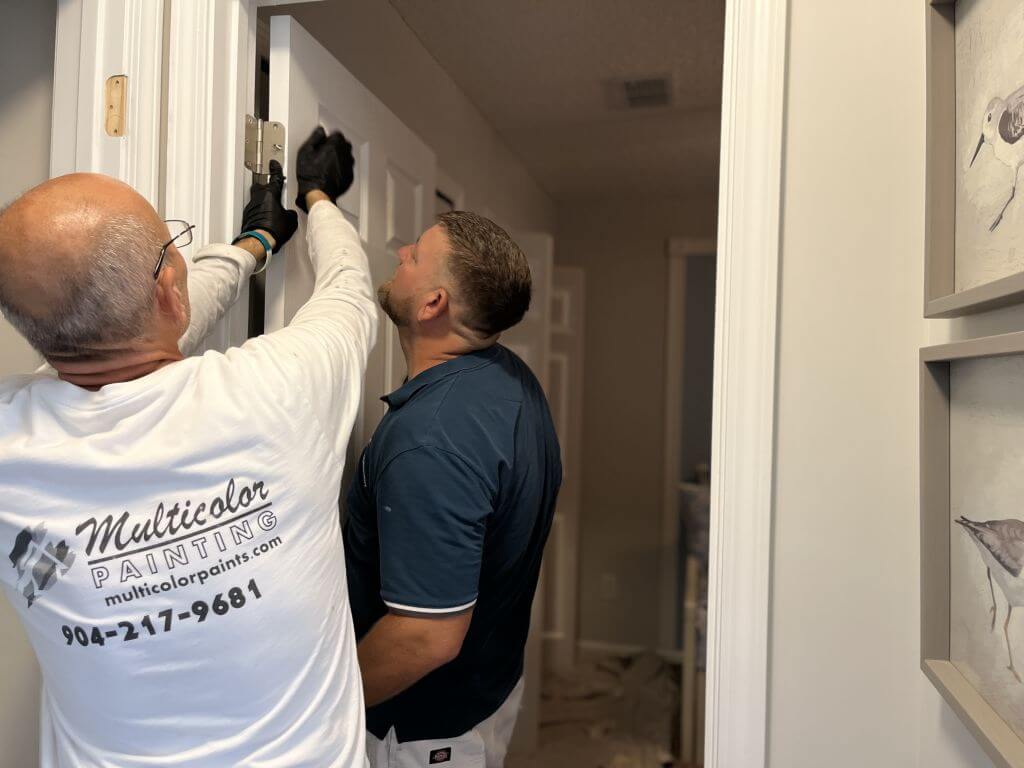
Best paint for interior doors
Choosing the right paint for doors is crucial for durability and appearance:
- Semi-gloss or gloss paint: These finishes are ideal for doors as they are durable and easy to clean.
- Acrylic latex paint: This type of paint is suitable for interior doors due to its durability and ease of use.
Painting techniques for doors
- Prime the door: Apply a coat of primer to ensure better paint adhesion and durability. Allow it to dry completely.
- Use a brush and roller: Use a brush to paint the edges and detailed areas, and a roller for the flat surfaces. This ensures a smooth, even finish.
- Apply multiple coats: Apply at least two coats of paint, allowing each coat to dry fully before applying the next. Lightly sand between coats for a smoother finish.
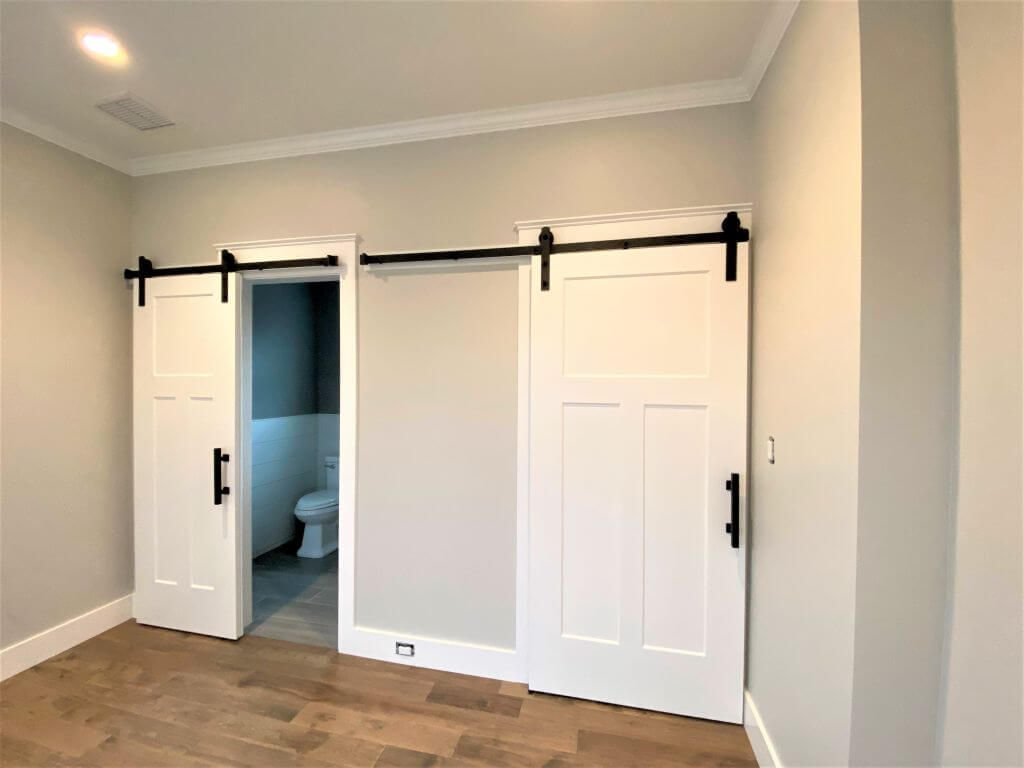
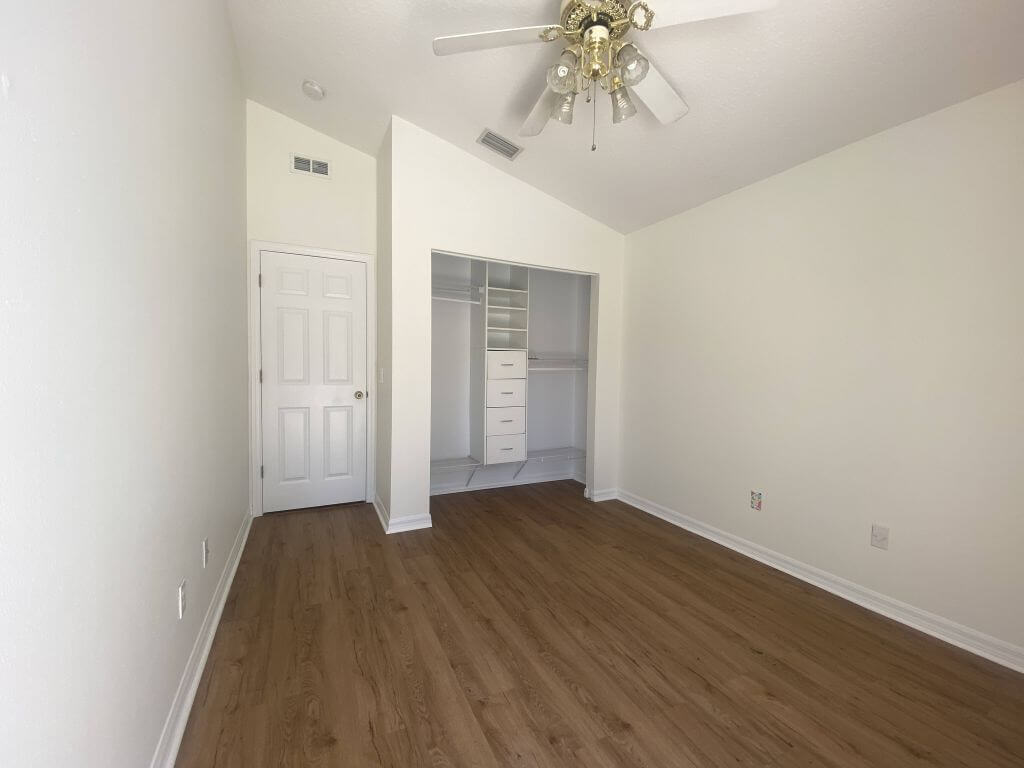
Typical costs for interior painting per square foot
The cost of painting interior walls can vary based on several factors.
Several factors can influence the overall cost of painting:
- Room size: Larger rooms require more paint and time.
- Wall condition: Walls needing extensive preparation or repair work can increase costs.
- Paint quality: Higher-quality paints are more expensive but offer better coverage and durability.
- Labor costs: Hiring professional painters adds to the cost, but their expertise ensures a high-quality finish.
DIY vs. hiring a professional
Deciding between DIY painting and hiring a professional depends on your budget, time, and skill level:
- DIY painting: Cost-effective and allows you to work at your own pace. However, it requires time, effort, and some skill to achieve a professional finish.
- Hiring a professional: More expensive but ensures a high-quality finish with less hassle. Professionals have the experience and tools to complete the job efficiently.
Repainting interior walls and doors can significantly enhance the appearance and feel of your home. By properly preparing your surfaces, selecting the right paint, and employing effective painting techniques, you can achieve a professional-grade finish that will last for years. Understanding the cost considerations and deciding whether to tackle the project yourself or hire a professional can help ensure a successful and satisfying outcome. With careful planning and execution, your repainting project can transform your living spaces and add value to your home.
I hope this guide helps: how to painting your room if you want to do it yourself at home. If you would rather entrust the task to a professional painter in the Saint Augustine area, feel free to call me for a free quote. Call now: 1(904) 217-9681
For further guides and new inspirations, keep reading the blog:
- How to paint kitchen cabinets without brush marks?
- How to wallpaper a ceilings?
- What can you put over textured walls? Exploring textured wall panels
FAQ
1. What are the basic steps to repaint interior walls?
To repaint interior walls, follow these steps:
- Gather all necessary materials and tools.
- Clean and repair the walls.
- Protect furniture and floors.
- Choose the right paint and colors.
- Use proper painting techniques for cutting in and rolling the walls.
2. How do I choose the right paint for my interior walls?
Consider the type of paint (latex, oil-based, or acrylic), the finish (matte, eggshell, semi-gloss), and the color that suits your room’s purpose and décor. Test samples on the wall to see how they look at different times of the day.
3. How can I estimate the amount of paint needed for a room?
Measure the height and width of each wall to calculate the total square footage. Use an online paint calculator or consult with a paint store expert. Generally, one gallon of paint covers about 350 square feet.
4. What is the best way to paint interior doors?
Prepare the doors by cleaning, sanding, and applying primer. Use semi-gloss or gloss paint for durability. Paint the edges and detailed areas with a brush and use a roller for flat surfaces. Apply multiple coats, sanding lightly between each coat.
5. Should I hire a professional painter or do it myself?
Consider your budget, time, and skill level. DIY painting is cost-effective but requires time and effort. Hiring a professional is more expensive but ensures a high-quality finish with less hassle.

